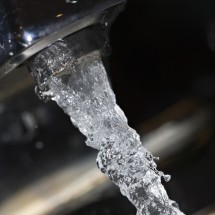Lead Contaminated Water Testing
What is Lead Contaminated Water?
Lead, a metal found in natural deposits, is commonly used in household plumbing materials and water service lines. The greatest exposure to lead is swallowing or breathing in lead paint chips and dust. Get the Lead Out provides fast and accurate water testing to ensure your water is free of lead.

Why Is Lead Contaminated Water Testing Important?
Lead found in drinking water can cause a variety of health effects in adults, but especially children. Children under the age of six are the most affected. Exposure to lead can lead to developmental delays and learning disabilities. Adults who are exposed over time can develop high blood pressure. It is important to treat the issue in a timely manner because periods of extended exposure to lead contaminated water can lead to kidney problems.
How We Can Help
Lead Contaminated Water Testing
How Does Lead Get in Your Water?
Lead is rarely found in wells or other sources of water. The vast majority of all lead contamination in water is from the water entering through corroded taps and plumbing materials. Lead pipes and fixtures are more common in homes built before 1988. Over time, water may corrode the metal in pipes and fixtures. As the metal corrodes, lead is deposited into your water, especially if it is warm or hot water. The higher temperature helps loosen particles from the metal.
After testing, if lead is found in your water, the next step is to investigate the source. Lead will most likely be coming from your pipes or fixtures. It is best to replace the affected plumbing in these cases.
Reduction of Lead in Drinking Water Act
On January 4, 2011 congress enacted the Reduction of Lead in Drinking Water Act. This law was an amendment to Section 1417 of the Safe Drinking Water Act. Starting January 2014, lead pipes, plumbing and fixtures could not be introduced into commerce. The law states that all plumbing that carries water used for plumbing or cooking must have a lead content percentage less than 0.25.
This measure significantly reduces the risk of lead found in pipes manufactured after 2014. The maximum allowable measure of lead before this date was 8 percent.
Click the PDF Logo to Read the Reduction of Lead in Drinking Water Act in Full
